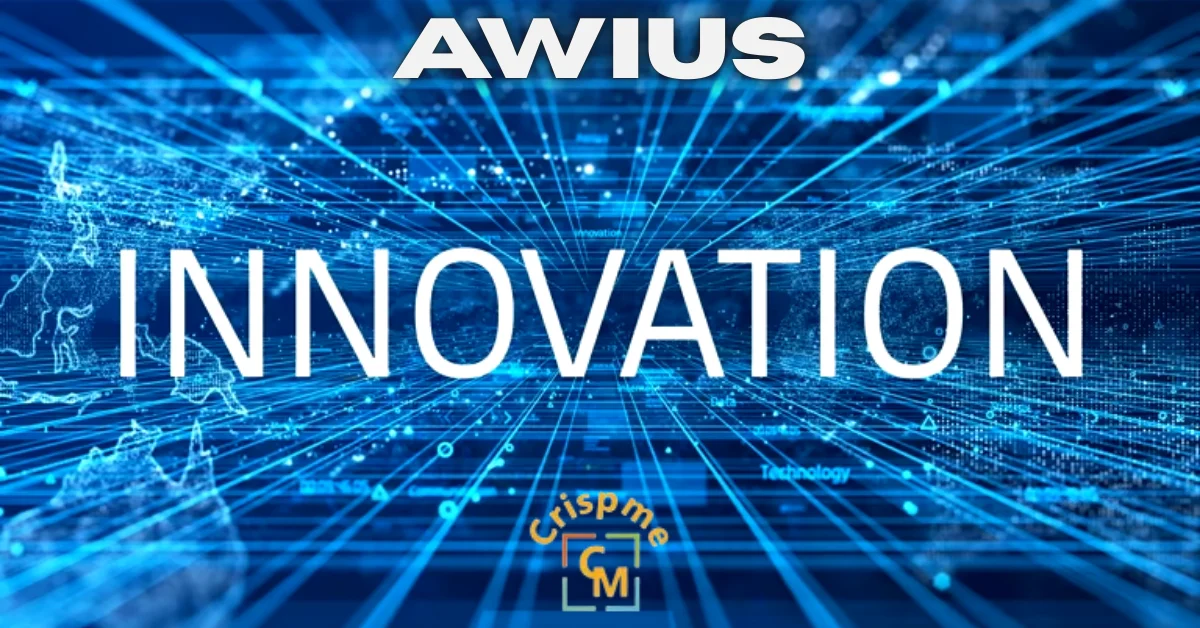TECHNOLOGY
How to Choose the Right SharePoint Development Service: Key Points to Know

It is extremely important to find the right SharePoint development service to utilize all the different features that this useful platform offers. Many functions for content management, teamwork, as well as for the automation of business processes are present in the SharePoint system. But to reach the optimal aim, a proper development service provider must be chosen. In this blog, you will learn some of the important criteria you need to check with the SharePoint development service to ensure that your project is a success.
Expertness and Proficiency of SharePoint Development Service
Evaluating Technical Expertise: There are two main questions: first is the issue of technical knowledge and experience of the SharePoint development service provider. The team must have sufficient expertise concerning the area of architecture, features, and functionalities of SharePoint. Seek out providers who have substantive technical expertise in selecting appropriate architecture for executing and managing SharePoint projects satisfactorily.
Relevant Project Experience: It is worthwhile noting that any relevant project experience is an added advantage to the company. It is apparent that when the service provider undertakes projects that are similar to your own, many headaches are gone. Fetch some case studies or references to evaluate their work about comparable SharePoint development projects.
Customization Capabilities in SharePoint Development Service
Delivering Tailored Solutions: SharePoint is undoubtedly both an effective and flexible tool. Thus, when deciding on any development service, you have to consider the delivery of tailor-made solutions. A vendor who understands how to change SharePoint according to the client’s requirements will be of great benefit to your project.
Prioritizing User Experience: Now, we need to think about how to make the customization more accommodating in terms of the final experience. The development service should be able to create a design that is easily understood by users and driven towards using the platform efficiently and allows for easy navigation within it. Check that the provider has a user-centric approach to
SharePoint Development Service Integration Capabilities
Smooth Integration with Existing Systems: SharePoint forms the bulk of the internal organizational structure, which means that it is expected to complement other systems within the firm such as CRM, ERP, or HRMS. In the process of selecting a SharePoint development service, consider how well they can incorporate SharePoint into the rest of your IT environment. Good integration can reduce operational costs, increase data quality, and increase output.
Expertise with Microsoft 365 integration and therefore with SharePoint: As one of the Microsoft 365 tools, the development service has to possess the skills to interface SharePoint with Microsoft 365 tools such as Teams, OneDrive, and Outlook. This integration fosters the spirit of teamwork and helps streamline processes across the M365 platform.
Data Protection & Compliance in SharePoint Development Service
Ensuring Data Protection: Every implementation of SharePoint incorporates a data security layer. It is paramount that they be able to implement security measures exponentially commensurate with the level of sensitive information being handled and the security parameters of your organization.
Meeting Compliance Requirements: The specific needs of your industry may call for certain compliance features in your SharePoint solution. If it’s possible, choose a development service provider who has expertise in this area censoring any non-compliance feature factors in software development.
Ongoing Maintenance and Support
The backup support: The use of SharePoint evolves over time, and so do the requirements for support of the system and application. Therefore, while choosing a SharePoint development service, determine how much support they provide after deployment.

Promoting User Adoption with Help and Training
Any SharePoint project is highly influenced by user adoption. If you hire and manage a quality development service provider, that level of increment is guaranteed as the service provider will train your staff on how best to use SharePoint. They also should extend user support to help with any problems users might face in the process of using the system daily.
Scalability and Adaptability of SharePoint Development
Solutions that Grow with Your Company: Your SharePoint system should be updated as your organization changes. Check that the SharePoint development service has a level of service that is scalable and would allow for further growth and such adjustments can be made whenever it is required. Such ability enables you to avoid incurring unnecessary costs on new developments in the days to come.
Support for New Growth and Change without Getting Stuck: Your provider should also go further than scalability. Their business model should allow them to respond to the changing business landscape. They should be able to change it or put some new element when the requirements change so that the SharePoint system in place helps in achieving the new set objectives of the organization.
In conclusion
The correct choice and understanding of the SharePoint development service is an important aspect of your project. For successful project results, prospective clients can carefully take into consideration technical expertise, degree of customization, compatibility with other system applications, security, level of support after the sale, flexibility, and communication. Experience What SharePoint Development Services Can bring to your business.
TECHNOLOGY
Camegle: Connect Instantly with Strangers Worldwide

Introduction to Camegle and its features
Imagine being able to chat with someone from halfway across the globe in just a few clicks. Welcome to Camegle, where the world becomes your social playground! This innovative platform allows you to connect instantly with strangers worldwide, making it easier than ever to meet new people and share experiences. Whether you’re looking for friendship, advice, or simply a fun conversation, Camegle has features designed to enhance your online interactions. Get ready to dive into an exciting digital space where curiosity meets connection!
How Camegle works: connecting strangers from around the world
Camegle operates on a simple yet effective premise: connecting users with random strangers from across the globe. With just a click, you’re thrown into an unexpected conversation.
Upon entering the platform, you can choose to engage via text or video chat. This flexibility allows for quick interactions tailored to your comfort level. Whether you’re looking for casual banter or deep discussions, Camegle has got you covered.
The process is seamless. You don’t need an account—just hit start and begin chatting instantly. The anonymity encourages open dialogues without fear of judgment.
Camegle’s algorithm pairs users based on their preferences and interests, making each encounter unique. It’s like diving into a new culture with every connection made!
Benefits of using Camegle for social interaction
Camegle offers a fresh approach to connecting with people from diverse backgrounds. You can engage in conversations that spark curiosity and foster understanding.
The anonymity factor is a major draw for users seeking genuine interactions without the pressure of identity. This freedom often leads to more honest exchanges.
Additionally, Camegle provides instant access to new perspectives. Engaging with strangers opens doors to cultures and ideas you might never encounter in your daily life.
Another benefit is the platform’s flexibility. Whether you want light-hearted chats or deep discussions, there’s always someone available who shares your interests.
With no long-term commitments, users can explore connections at their own pace. If a conversation isn’t flowing, it’s easy to move on and find another match quickly.
This dynamic environment encourages spontaneity, making each session unique and exciting every time you log on.
Safety precautions and measures in place on Camegle
Camegle prioritizes user safety by implementing several precautions. Users are encouraged to remain anonymous, which helps protect personal identities and prevents unwanted exposure.
The platform employs a robust moderation system designed to monitor conversations for inappropriate content. This proactive measure aims to create a respectful environment for all users.
Additionally, Camegle includes features that allow users to report misconduct or block others instantly. These tools empower individuals to take control of their interactions.
Age restrictions are also in place, ensuring that younger audiences engage in age-appropriate discussions only. This thoughtful policy enhances the overall experience for everyone involved.
Regular updates and community guidelines further educate users about safe practices while chatting with strangers worldwide. Such measures foster trust and encourage open communication among participants on the platform.
Success stories and testimonials from Camegle users
Camegle has transformed the way users connect with others across the globe. Many individuals have shared their experiences, highlighting unexpected friendships and meaningful conversations.
One user from Canada recounted a late-night chat that blossomed into a long-distance friendship. They now share life updates regularly, proving how Camegle can transcend borders.
Another user found support during tough times through anonymous chats. They expressed gratitude for the platform, which provided comfort when they needed it most.
A high school student mentioned how Camegle helped them improve their communication skills by interacting with diverse people. This experience proved invaluable in building confidence for real-life conversations.
Such stories showcase the powerful connections waiting to be forged on Camegle. Each unique interaction adds to a tapestry of human experience, making every session an adventure worth taking.
Comparison with other social networking platforms
Camegle stands out in the crowded landscape of social networking platforms. Unlike traditional networks, it facilitates spontaneous connections with strangers rather than focusing on established friendships.
Many platforms prioritize curated content and interactions within existing social circles. Camegle flips that dynamic, offering a fresh take where users can meet people from diverse backgrounds without any prior ties.
While other apps often require profiles or friend requests, Camegle promotes anonymity. This unique feature allows for genuine conversations free from judgment, reducing the pressures commonly associated with maintaining an online persona.
Unlike forums or group chats that can feel overwhelming, Camegle’s one-on-one interactions create intimate settings for dialogue. This simplicity fosters real connections and encourages open discussions on various topics.
By providing a platform solely dedicated to connecting strangers instantly, Camegle carves its niche and appeals to those seeking unfiltered human interaction in today’s digital age.
Conclusion: Why you should try Camegle for a unique social experience
Camegle presents a refreshing way to connect with people from all corners of the globe. Its unique features offer an easy and intuitive platform for social interaction, making it stand out among other networking sites. The simplicity of engaging with strangers can lead to exciting conversations and broaden your perspectives.
With safety measures in place, users can enjoy these interactions without compromising their personal information. This focus on user security helps build trust within the Camegle community. Many users have shared stories about finding meaningful connections or even lifelong friendships through this platform.
When compared to traditional social media networks, Camegle offers something different—a spontaneous experience that doesn’t rely on pre-existing connections or algorithms curating your feed. Instead, you get real-time exchanges that are often unpredictable yet thrilling.
If you’re looking for a novel way to meet new people and share experiences, giving Camegle a try could be worthwhile. You never know what kind of connection might await you just one click away; it could change your perspective on online communication altogether.
TECHNOLOGY
Awius: A Flexible Digital Term Driving Innovation and Growth

Introduction to Awius and its Purpose
In a world where innovation drives success, businesses are constantly seeking ways to stay ahead of the curve. Enter Awius, a flexible digital term that’s redefining how organizations operate. With its unique approach and versatile applications, Awius is not just another buzzword; it’s a catalyst for growth and transformation.
Imagine harnessing the power of technology to streamline processes, enhance collaboration, and foster creativity within your team. That’s exactly what Awius aims to achieve. By bridging gaps in traditional practices with modern solutions, this digital tool empowers companies to thrive in an ever-evolving marketplace.
As we delve deeper into what makes Awius stand out, you’ll discover the remarkable benefits it brings to businesses of all sizes. Ready to unlock new opportunities? Let’s explore how Awius can pave the way for innovation and growth!
Dive deeper into the story and discover related ideas that matter to you today.
The Benefits of Using Awius in Businesses
Awius offers a multitude of advantages for businesses looking to innovate and streamline operations. One standout benefit is its flexibility. Companies can tailor Awius to fit their specific needs, adapting it as they grow.
Another crucial advantage is enhanced collaboration. Awius fosters teamwork by breaking down silos and enabling real-time communication among departments. This leads to quicker decision-making and increased efficiency.
Furthermore, the platform provides valuable insights through data analytics. Businesses can leverage these insights for informed strategies that drive growth.
Awius also prioritizes user experience with an intuitive interface, allowing employees at all levels to engage effortlessly with the system. Training time decreases significantly, making integration smoother.
Scalability ensures that as your business evolves, Awius evolves too—supporting expanding ventures without losing functionality or performance.
How Awius Has Transformed Traditional Term Practices?
Awius has redefined how businesses approach traditional term practices. Its innovative framework streamlines processes that were once cumbersome and time-consuming.
Gone are the days of endless paperwork and manual data entry. Awius offers a digital solution that enhances efficiency, allowing teams to focus on strategic initiatives rather than administrative tasks.
Collaboration has also seen a significant boost. With Awius, team members can easily share insights and updates in real-time, breaking down silos that often hinder progress.
Moreover, the flexibility of Awius means it adapts to different industries seamlessly. Companies can customize their workflows to match specific needs, ensuring they stay aligned with evolving market demands.
This transformation not only fosters creativity but also drives innovation across various business sectors. The shift towards digitization created by Awius is paving the way for future-ready enterprises.
Take a deeper dive and see what else awaits—explore more on this topic!
Success Stories of Companies Who Have Implemented Awius
Several companies have embraced Awius, leading to remarkable transformations in their operations. One notable example is a mid-sized tech firm that adopted the platform to streamline its project management processes. With Awius, they reduced project turnaround time by 30%, significantly enhancing team collaboration.
Another success story comes from an e-commerce business that leveraged Awius for customer engagement strategies. This resulted in a 40% increase in customer retention rates within just six months.
A healthcare organization also turned to Awius to manage patient data and communication efficiently. The outcome? Improved patient satisfaction levels and smoother workflows across departments.
These examples highlight how diverse industries are harnessing the power of Awius, reshaping their practices while driving innovation and growth at unprecedented speeds. Implementing this flexible digital term has proven beneficial across various sectors, showcasing its adaptability and effectiveness.
Features and Tools Offered by Awius for Innovation and Growth
Awius stands out with a suite of features designed to foster innovation and growth. Its user-friendly interface allows businesses to seamlessly integrate its tools into their existing workflows.
One notable feature is the analytics dashboard. This tool provides real-time insights, helping companies make data-driven decisions quickly. Detailed reports can highlight trends and areas for improvement.
Collaboration tools are another key aspect of Awius’s. Teams can communicate effectively, share ideas, and work on projects in real time. This fosters creativity and accelerates project timelines.
Moreover, Awius’s offers customizable templates tailored to various industries. These templates streamline processes, saving valuable time while ensuring consistency across tasks.
The integration capabilities allow users to connect Awius’s with other popular software solutions they already use. This flexibility enhances productivity without disrupting current operations or requiring extensive training.
The Future of Awius and Its Impact on the Business World
The future of Awius’s is bright and full of potential. As more businesses recognize the advantages it offers, adoption rates are expected to soar.
With a focus on flexibility and innovation, Awius’s empowers companies to adapt quickly to changing market conditions. This agility will be crucial as industries evolve at an unprecedented pace.
Emerging technologies like artificial intelligence and machine learning could integrate seamlessly with Awius’s platforms, enhancing decision-making processes significantly. Companies that leverage these tools will likely see improved efficiency.
Moreover, collaboration across teams will become smoother through Awius’s user-friendly interface. Enhanced communication can lead to faster project completion times and better outcomes.
As organizations seek sustainable growth strategies, utilizing Awius’s may provide them with the competitive edge they need in a crowded marketplace. The impact on productivity and creativity could reshape entire sectors for years to come.
Conclusion: Why Your Business Should Adopt Awius Today?
Embracing Awius’s is a strategic move for any business looking to innovate and grow. This flexible digital term streamlines processes, enhances collaboration, and empowers teams to adapt quickly in a fast-paced market. By leveraging its unique features and tools, companies can transform how they operate, leading to improved efficiency and increased profitability.
Awius’s not only modernizes traditional practices but also fosters an environment of creativity and innovation. The success stories from various industries illustrate the potential it has to drive substantial change. As businesses face evolving challenges, adopting Awius offers a competitive edge that sets them apart.
In today’s business landscape, staying ahead means being open to new ideas and technologies. Awius presents an opportunity not just for growth but also for redefining what’s possible within your organization. It’s time to consider how integrating this dynamic tool can unlock new pathways for success in your business journey.
Spotlight on content that matters—read our latest featured post today!
TECHNOLOGY
Rgarrpto: Revolutionizing Tech with Intelligent Automation

Introduction to Rgarrpto and its Purpose
In a world where technology evolves at breakneck speed, Rgarrpto emerges as a beacon of innovation. This cutting-edge platform is redefining how businesses interact with automation. By harnessing the power of intelligent automation, Rgarrpto is not just keeping pace; it’s leading the charge into an exciting new era.
Every day, organizations grapple with the complexities of their operations, seeking smarter solutions to enhance efficiency and productivity. That’s where Rgarrpto steps in—offering transformative tools that simplify processes and drive growth. But what exactly does intelligent automation entail? How can it benefit your business? Let’s dive deeper into this revolutionary concept and explore how Rgarrpto is reshaping the tech landscape for good.
Understanding Intelligent Automation
Intelligent automation combines artificial intelligence with automation technology. This powerful synergy enhances efficiency and decision-making in various processes.
At its core, intelligent automation mimics human behavior. It analyzes data patterns to make informed choices without constant human oversight. This capability allows businesses to streamline operations significantly.
Consider mundane tasks like data entry or customer support inquiries. With intelligent automation, these can be handled swiftly and accurately by machines, freeing up human talent for more strategic initiatives.
Moreover, it adapts over time through machine learning. As it processes more information, it becomes smarter and more effective at predicting outcomes. Such adaptability is crucial in today’s dynamic market landscape where agility is key.
This innovative approach is transforming how organizations operate, driving both productivity and innovation across industries. Businesses leveraging intelligent automation are not just keeping pace; they’re setting the standard for future growth.
The Benefits of Intelligent Automation for Businesses
Intelligent automation offers a transformative edge for businesses. By integrating AI and machine learning, companies can streamline operations like never before.
A key advantage is improved efficiency tasks that used to take hours can now be done in minutes, freeing teams to concentrate on strategic priorities.
Cost savings also play a crucial role. Reducing manual errors lowers operational costs while improving accuracy. Businesses witness an increase in productivity without inflating budgets.
Moreover, intelligent automation fosters better decision-making. With access to real-time data analysis, companies can pivot quickly based on insights gathered from automated systems.
Customer experiences improve dramatically as well. Personalized interactions powered by intelligent tools create stronger relationships and drive loyalty among users.
In a competitive market, these advantages position businesses ahead of their rivals, ensuring they stay relevant and innovative.
Real-Life Examples of Rgarrpto’s Impact on Tech Industry
Rgarrpto has already made waves in the tech industry with its innovative approach to intelligent automation. Take the case of a leading e-commerce platform that struggled with inventory management. By implementing Rgarrpto’s automated solutions, they streamlined their supply chain processes and reduced stockouts by 30%.
Another impressive example is seen in customer service. A telecommunications company adopted Rgarrpto’s AI-driven chatbots, which handled complex queries around the clock. This shift not only enhanced user experience but also cut operational costs by 20%.
In healthcare, Rgarrpto transformed patient data processing for hospitals. Automating medical records management allowed staff to focus more on patient care rather than paperwork.
These real-world applications illustrate how Rgarrpto is reshaping various sectors within tech, driving efficiency, and fostering innovation across industries. The impact is both significant and far-reaching.
How Rgarrpto is Changing the Landscape of Tech Companies
Rgarrpto is reshaping the tech landscape by introducing cutting-edge intelligent automation solutions. This shift enables companies to streamline operations and enhance productivity in ways previously thought impossible.
With Rgarrpto’s tools, businesses can automate repetitive tasks, freeing up valuable time for innovation and creativity. Employees can focus on strategic initiatives rather than mundane processes.
Moreover, Rgarrpto fosters a culture of agility within organizations. Companies adapt quickly to market changes, responding faster to customer needs. Such adaptability is essential in the rapidly evolving landscape of modern technology.
By integrating machine learning algorithms, Rgarrpto delivers insights that allow firms to make data-driven decisions with confidence. These advancements are not just incremental; they represent a fundamental change in how tech companies operate.
As more organizations adopt these technologies, traditional methods risk becoming obsolete. The impact of Rgarrpto is profound—a true game-changer for the industry at large.
Future Predictions and Potential Challenges for Rgarrpto
As Rgarrpto continues to innovate, the future appears bright yet complex. Predictions suggest a surge in demand for intelligent automation across various sectors. Companies may increasingly rely on Rgarrpto’s solutions to streamline operations and enhance productivity.
However, challenges loom ahead. The rapid pace of technology means constant adaptation is necessary. Staying ahead of competitors while evolving can be daunting.
Moreover, concerns about data security and privacy may arise as businesses integrate more automated processes. Striking the right balance between efficiency and safeguarding information will be crucial.
Another potential hurdle is workforce displacement. As intelligent automation takes over repetitive tasks, reskilling employees becomes essential for maintaining job satisfaction and economic stability.
Rgarrpto faces an exciting journey filled with both opportunities and obstacles that will shape its role in the tech industry moving forward.
Conclusion: The Exciting Future of Intelligent Automation with Rgarrpto
As we look ahead, the future of intelligent automation with Rgarrpto appears bright. This innovative company is not just reshaping how businesses operate; it’s embedding intelligence into the very fabric of technology. With every advancement and integration, Rgarrpto continues to push boundaries that once seemed insurmountable.
The possibilities are vast. From streamlining processes in manufacturing to enhancing customer experiences in retail, Rgarrpto’s applications are diverse and impactful. Businesses that adopt these technologies can expect increased efficiency, reduced costs, and improved decision-making capabilities.
However, challenges will certainly arise along this journey. As companies embrace automation on a larger scale, they must navigate issues related to workforce adaptation and cybersecurity risks. Balancing innovation with responsibility will be key for Rgarrpto as it charts its course forward.
The drive towards intelligent automation holds great promise for industries everywhere. Companies willing to harness this potential stand poised at the forefront of their sectors—ready to thrive in an increasingly automated world shaped by trailblazers like Rgarrpto. The transformation has begun; it will be fascinating to watch how far it goes.

 BUSINESS10 months ago
BUSINESS10 months agoBrand Visibility with Imprint Now and Custom Poly Mailers

 TECHNOLOGY8 months ago
TECHNOLOGY8 months agoDizipal 608: The Tech Revolution Redefined

 HEALTH9 months ago
HEALTH9 months agoHappy Hippo Kratom Reviews: Read Before You Buy!

 HOME IMPROVEMENT9 months ago
HOME IMPROVEMENT9 months agoThe Do’s and Don’ts of Renting Rubbish Bins for Your Next Renovation

 BUSINESS10 months ago
BUSINESS10 months agoExploring the Benefits of Commercial Printing

 HEALTH5 months ago
HEALTH5 months agoYour Guide to Shedding Pounds in the Digital Age

 LIFESTYLE10 months ago
LIFESTYLE10 months agoThe Disciplinary Wives Club: Spanking for Love, Not Punishment

 ENTERTAINMENT2 months ago
ENTERTAINMENT2 months agoExploring the Kristen Archives: A Treasure Trove of Erotica and More












